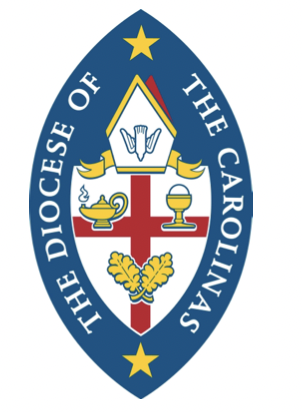Saint Patrick & The Irish Way of Making Disciples
/“In becoming an Irishman, Patrick wedded his world to theirs, his faith to their life.”
-Thomas Cahill
When most of us think of Ireland, we think about green rolling hills and country sides covered in grass. What is not as widely known is that over one thousand years ago on this little island, was the birth of one of the most influential movements in the history of the Christian church. In fact, some scholars argue that the Celtic Christians contributed to preservation of western civilization.
Celtic Christianity stands out as one of most vibrant and colorful Christian traditions that the world has ever known.
The Life of Saint Patrick
Before you can fully understand Celtic Christianity, it is important to look at the life and ministry of Saint Patrick. His life is surrounded by mystery, superstition, and myth. We have all heard of him, but few of us know very much about him. There is a holiday that bears his name and he is known as the man who drove the snakes out of Ireland and used the shamrock to explain the Trinity.
So who was Saint Patrick? Patrick was the founding leader of the Celtic Christian church and was personally responsible for baptizing over 100,000 people, ordaining hundreds of priests, driving paganism from the shores of Ireland, and starting a movement in Ireland that helped preserve Christianity during the Middle Ages. As we shall see, the life and ministry of Saint Patrick reveal the great influence that he made upon Christianity and the world.
Patricius, better known as Patrick, was born in 389 a. d. in a Christian home in Britain during a time when England was undefended by the Roman Empire. Irish raiders captured people in Britain and brought them back to Ireland as slaves. At the age of sixteen, Irish barbarians demolished Patrick’s village and captured him. They brought him to the east coast of Ireland and sold him into slavery. During this time, Patrick would spend many hours in prayer talking with God.
Six years later, he received a message from the Lord saying, “Soon you will return to your homeland…Come, and see your ship is waiting for you.”
He escaped from his master, fled 200 miles, and boarded a ship of traders who set sail for France and eventually made his way back into Britain. It was at this time that he received his call to evangelize Ireland. He explained his call in the following way:
“I had a vision in my dreams of a man who seemed to come from Ireland. His name was Victoricius, and he carried countless letters, one of which he handed over to me. I read aloud where it began: ‘The voice of the Irish…We appeal to you holy servant boy, to come home and walk among us.’ I was deeply moved in heart and I could read no further, so I awoke.
This vision had a profound effect on Patrick and he immediately made plans to return to Ireland, the land of his previous captivity.
His Ministry Among the Irish
Tradition has it that Patrick was appointed bishop and apostle to the Irish in 432. Patrick traveled the Irish country preaching the gospel. Paganism was the dominant religion when Patrick arrived. He faced most of his opposition from the druids who were highly educated and also practiced magic. They constantly tried to kill Patrick. He writes, “Daily I expect murder, fraud, or captivity, but I fear none of these things because of the promise of heaven.”
Patrick’s own writings tell a great deal about the man, his ministry, and his love for Ireland. He mentions several times that his education was disrupted when he was taken captive at the age of sixteen. His writings tell that he was very self-conscious about his lack of education. He said, “I am unable to explain my mind to learned people.” Although he did not receive the same education as other bishops, he did receive his call directly from the Lord. Perhaps it was his lack of education that made him so successful in pagan Ireland. His great success demonstrates that he was able to relate to common people in a real and relative way. He had a great love for people and the Lord, which was manifested in every area of his life and ministry.
Part of Patrick’s ministry strategy was focused on Ireland’s tribal kings. Patrick knew that if a king converted, his people would follow. When kings would become converted they would often give their sons to Patrick to educate and train in the ways of the Lord. Thus, he persuaded many of them to enter into the ministry. Patrick’s mission was responsible for planting nearly 700 churches throughout Ireland.
As bishop of Ireland, he was instrumental in the conversion of thousands, ordaining hundreds of clergy, and establishing many churches and monasteries. Because of his ministry, Christianity spread through Ireland and into other parts of the British Isles. Patrick’s mission was responsible for planting nearly 700 churches throughout Ireland.
The churches and monasteries that he was responsible for establishing became some of the most influential missionary centers in all of Europe. Missionaries went out from Ireland to spread the gospel throughout the world. It was the Irish monasteries that helped preserve the Christian faith during the dark ages.
The missionary legacy of Saint Patrick continued long after his death through the Celtic Christian monastic movement. In the sixth and seventh centuries, Celtic Christianity spread throughout the British Isles like wild fire under the gifted leadership of men such as Columba who established monastic communities in Iona and Aidan in Lindsfarne. These monasteries were not places for monastic recluses, rather they became spiritual centers and discipleship training hubs that sent out missionaries throughout Western Europe.





